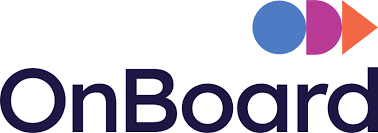This article, brought to you by OnBoard, discusses what the new normal will likely look like and offers recommendations and leading practices for your board to operate effectively.
Back in the day, board meetings were generally in-person affairs. It was rare for a board member to dial in to a meeting and those that did often had a poor experience — struggling to hear and be heard. Of course, pandemic-related ‘work from home’ mandates changed all that. Organisations had to quickly find new ways to distribute board materials and enable everyone to join board meetings remotely.
Those who had already embarked on the digital transformation of their board had a head start — even if they were only at the stage of sending board materials out by email or providing access to documents on a shared drive. In many cases, collaboration tools like Zoom and Teams were quickly rolled out (if not already in use). Boards managed to keep on meeting and maintaining the required stewardship and oversight of their organisations; in fact, 79% of respondents to OnBoard’s Board Effectiveness survey in 2021 found that their boards were MORE effective since the start of the pandemic. The No.1 reason cited was the shift to remote work and online meetings.
Now organisations are bumping up against a new challenge: are remote meetings here to stay? Will in-person meetings ever return? Or will some kind of hybrid model be the way forward? It’s too early for stats about potential trends to be available but it seems likely that many boards will pursue a hybrid model. That may involve meetings that combine remote and in-person participants or a mix-and-match schedule that comprises both virtual and in-person meetings.
Whatever your short-, medium- or longer-term plans for board meetings, pursuing the digital transformation of your board can deliver significant benefits when it comes to driving efficiency and productivity in a hybrid world.
4 tips for digitising your board in a hybrid world
Digitising your board clearly involves rolling out technology but it’s just as important for the board to adapt its working style for the hybrid world.
- Ensure everyone has access to the latest information by establishing a single source of truth. If you haven’t already done so, create a digital repository for all your board papers, minutes, policy documents and other resources. This will help to avoid board members storing copies locally or making printouts.
- Enable effective communication and collaboration in a hybrid environment. Roll out tools and technology that meet the needs of your board and are aligned with the type of organisation you are. If you’re a small business operating in a lightly regulated sector, you may find that freely available software tools are all you need to allow board members to communicate and collaborate outside of meetings, and to bring them together in a hybrid meeting environment. On the other hand, a larger corporate that is subject to more regulation should probably consider using collaboration tools that offer more security features, access controls and audit trails.
- Set and agree a policy for engagement during hybrid meetings. This will help members who join remotely to be just as involved and effective during the meeting as those attending in person. Make sure, for example, that those round the table don’t lapse into discussions that exclude remote attendees. Your chair will have an important role to play in ensuring that remote attendees have every opportunity to ask questions and contribute to decision-making.
- Optimise adoption of your chosen technology. If you’re introducing digitisation or taking your technology to the next level, you’ll need to manage the change. Help everyone to understand that the transformation is going to happen but try to roll it out at a pace that suits the most reluctant or least digitally skilled users, accompanied by appropriate support and training.
How a board intelligence platform optimises hybrid working
Many organisations find that a board intelligence platform is the ideal digital solution to remain efficient in a hybrid working environment. OnBoard provides both remote and in-person attendees with a more seamless experience — before, during and after meetings.
Your board intelligence platform should:
- Focus on ease-of-use and intuitive user experiences to minimize training for directors
- Help members prepare for meetings by simplifying and securing their access to centrally stored board papers and other relevant information
- Foster collaboration between board members and enable them to perform governance functions ahead of a meeting
- Integrate video conferencing for a better meeting experience
- Ensure that all decisions taken by the board are trackable and traceable
- Provide the features and controls you need to protect data and communications, and ensure only authorised users have access to resources
- Be intuitive to use on any device (whether corporate or personal) to help accelerate adoption
- Ensure strong cybersecurity for privileged important board data, information, and content
This blog is written by OnBoard, who have partnered with NEDonBoard to provide educational and insightful content to our community of influential board members. To learn more about OnBoard and how it can support your board to be more efficient and productive in a hybrid working environment, visit the OnBoard website or contact experts at: [email protected].
Not a member yet? To access the learning resources of the platform, including our NED Library (which contains tens of webinars and presentations from subject matter experts and experienced board members), join our organisation as a member.




